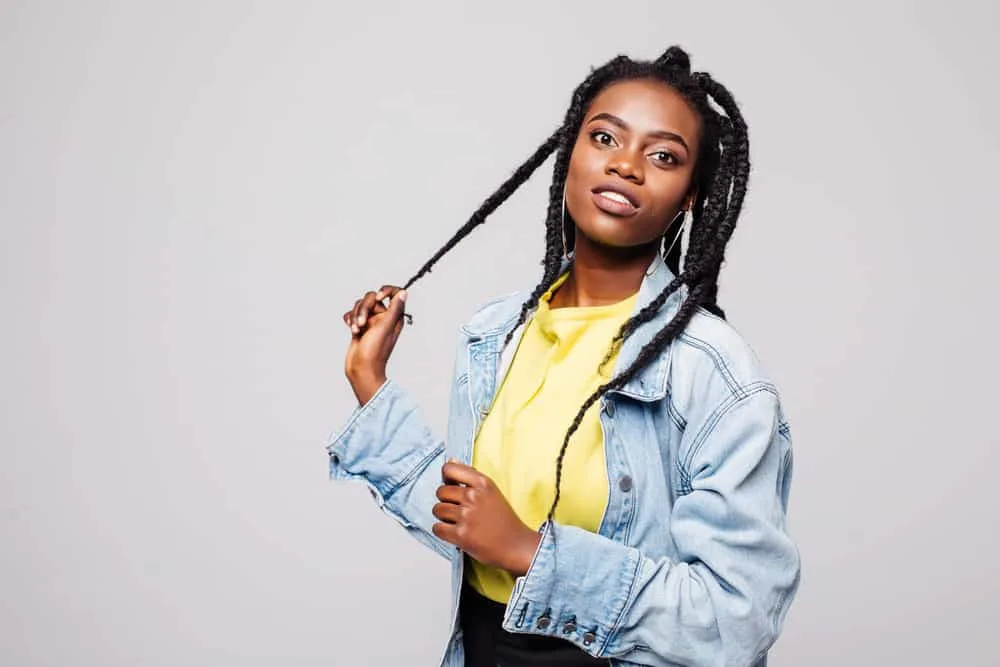
If you’re like most people, you love the intricacy and versatility of braids. You might have even gotten your braids done professionally in the past. But what if you could do your own braids?
Imagine the styling freedom you’d enjoy by being able to braid your own hair!
If you want to learn how to braid hair, you’re in the right place. In this article, we’ll share how to do several types of braids, from three-strand and four-strand braids to rope braids and Dutch braids. Let’s get right into it!
Table of Contents
How to Braid Hair for Beginners
Many people shy away from learning how to braid because they fear they can’t do it. Well, you’ll be glad to know that you can definitely learn how to braid. All it takes are good instructions (which you’ll get here) and a lot of practice. Keep reading for some practical braiding tips.
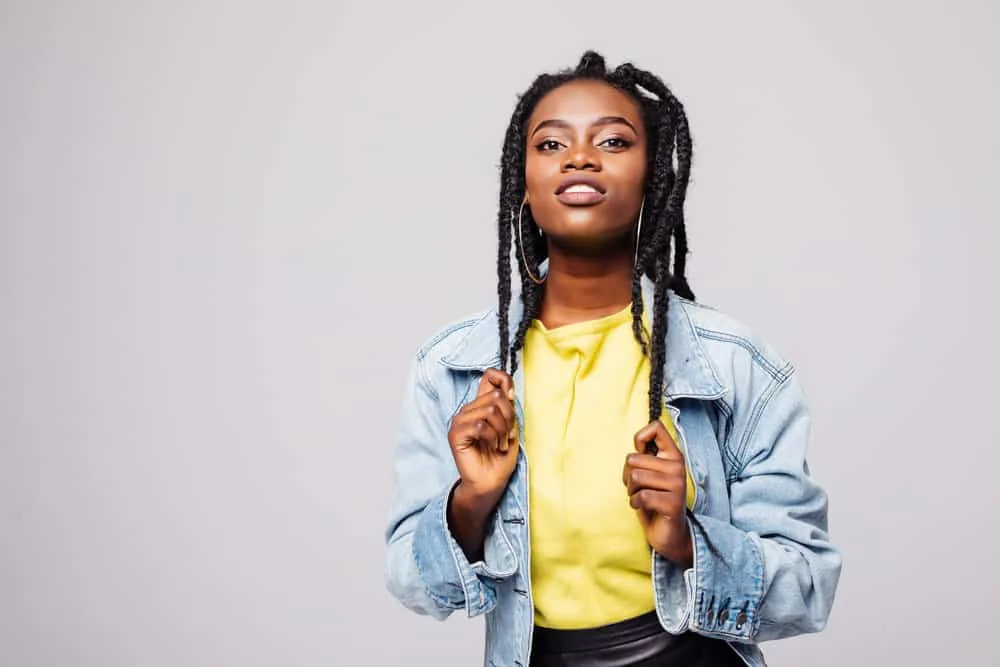
Prep Your Hair
When you’re new to braiding your hair, you might be excited to get going and consider braiding it when it’s dirty. But we urge you not to do that, especially if you plan to wear your hair braided for several days or weeks.
Here are some issues that may surface if you braid your hair while it’s dirty:
- Tangling. The braiding process becomes a bit problematic when your hair is coated in gunk, products, and excess oils. Whatever is on your hair could make it hard for your strands to slide past each other, causing tangling.
- Dusty results. Another issue that can come up is your hair looking dirty when you’ve completed your braids. During the braiding process, whatever’s in your hair will become trapped in the braids, and you’ll have a difficult time getting it out (if it’s at all possible).
- Lack of adequate hair care. Before you do a long-term style on your hair, you should always cleanse, condition, and moisturize it first. That way, your hair will have what it needs to be healthy while in the braided style.
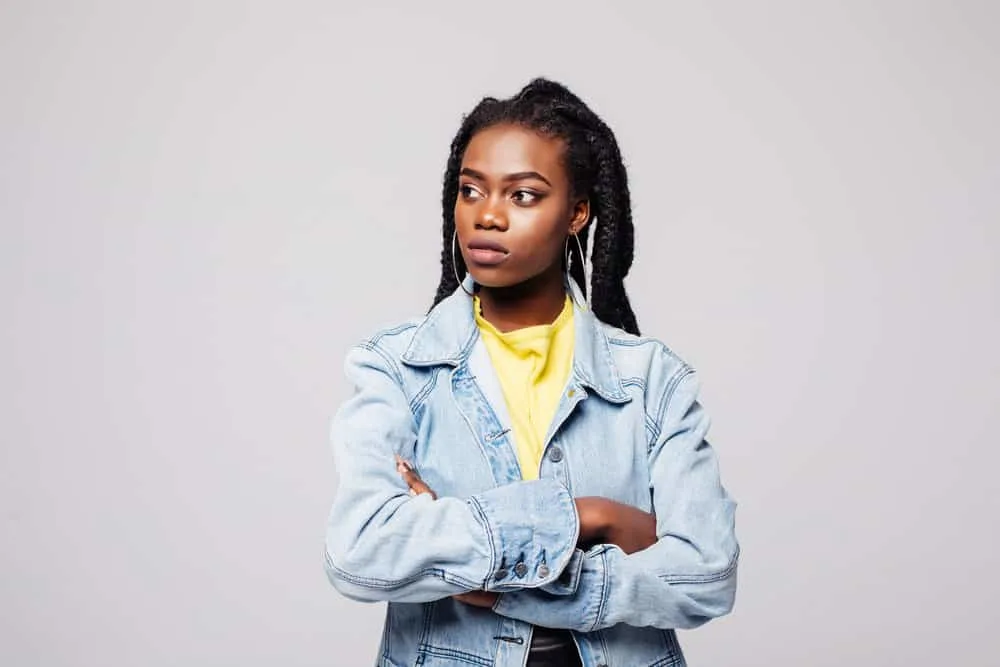
Step-by-Step Instructions for Prepping Hair for Braiding
Prepping your hair for braiding plays a substantial role in how your braids will ultimately turn out. Follow the below steps to do it right:
- Wash your hair well. Use a clarifying shampoo to remove any debris or buildup from your strands. Scrub your scalp well with the pads of your fingers to ensure that your scalp gets clean.
- Condition your hair. After shampooing, you should always condition your hair. Your hair needs moisture if it’s going to be easy to work with, so be sure to use a hydrating and nourishing conditioner.
- Detangle your hair. While the conditioner is still coating your hair, use a wide-tooth comb to detangle it from the ends up to your roots. You can also use your fingers to do this instead of a comb.
- Decide whether you want to blow dry your hair or braid it in its natural state. Blow-drying your hair will result in an overall sleeker appearance. If you decide that you want to stretch your hair with a blow dryer, be sure to apply a heat protectant spray to prevent heat damage. And remember that there are heatless ways to stretch your hair, including banding, braid outs, and twist outs. But you don’t have to stretch your hair if you don’t want to.
- Apply your favorite hair oil or moisturizer before braiding. Doing so will make your hair easier to braid and will help ensure your hair’s health while it’s tucked away in your chosen braid style.
Now that your hair is prepped, it’s time to start braiding! The following sections will house step-by-step instructions for some of the top braid types.
Three-strand Braids
Three-strand braids are braids woven from three strands – you guessed it. For all three-strand braids, you’ll need to know a single technique, and it goes like this:
- Begin by separating a section of hair into three strands. The strands should be equal in size, or the resulting braid won’t be uniform. Make the sections small if you want a small braid, medium for a mid-sized braid, and big for jumbo braids.
- Position the strands, so you have one on the left, one on the right, and one in the middle.
- To do a three-strand braid stitch, you’ll hold the left and middle sections in your left hand and the right section in your right hand.
- Bring the right section under and into the middle.
- Bring the left section under and into the middle.
- Continue passing the left and right sections under and into the middle until you reach the end of the braid.
Watch this video tutorial to see how three-strand braids are done.
Things to Keep in Mind While Doing Three-Strand Braids
Wouldn’t it be great if the step-by-step instructions were all you needed to create perfect braids? That’s not the case. But if you keep the below tips in mind in addition to the steps mentioned above, your braids come out clean and frizz free:
- Make sure your fingers are close to the braid while you’re braiding. Holding the hair too far away from the braid you’re creating will allow frizz to take hold. And if that’s not the look you’re going for, you won’t appreciate it.
- Hold the hair with some tension as you do each braid stitch. This doesn’t mean you should yank the hair as you braid – use just enough tension to stretch the hair out. If you pull the hair too tight as you braid, especially at the roots, you could get a headache or even develop hair loss.
- Take your time with your first few braids. If you can get the technique down, speed will come over time.
- Don’t obsess over your finger placement. The goal is to ensure that the sections on the left and right are pulled under the middle section of hair one after another. However, you need to hold your hands to achieve this is fine.
Note: You can create three-strand braids by pulling the left and right sections of hair over the middle section instead of under it (this is called over-braiding). If the previous braiding method doesn’t feel natural, try over-braiding. The result will be similar.
Four-Strand Braid
A four-strand braid is slightly more difficult to execute than a three-strand braid. And for that reason, we recommend you master basic three-strand braiding before tackling four-strand braiding.
Here’s how to do a 4-strand braid:
- Separate your hair into four equal sections.
- Cross the far right strand over the strand immediately to the left of it and then under the next strand.
- Cross the far left strand under the strand immediately to the right of it and then over the next strand.
- Continue braiding in this manner, crossing the right strand over and under, then crossing the left strand under and over.
- When you reach the end of the braid, secure it with an elastic band, and you’re all done!
Are you more of a visual learner? This four-strand-braiding tutorial will give you a visual demonstration that’ll help a ton.
Four-strand Braiding Tips
If you can get through the above steps, that’s great! Most people can master them with time. But if you want your four-strand braids to look like they were crafted in the salon by a trained braider, keep the following tips in mind.
- Keep the tension consistent throughout. If you pull random strands tighter than others, your braid could turn out non-uniform. If you start the braid with very little tension, keep it that way throughout the whole braid. And the same goes for situations when you use a lot of tension at the start. Consistency is key.
- Smooth your hair throughout the braiding process. With four-strand braids, lumps and bumps will show and could even throw off the braid pattern. So, if your hair is curly, kinky, or coily, and you want your four-strand braid to be ultra sleek and clean, you’ll need to stretch or straighten your hair first.
Rope Braid
Rope braids are becoming increasingly popular among people of all ethnicities with all hair types. You can do them in various sizes to create many styles.
If you want to create the perfect rope braid, follow the below instructions:
- Separate a section of hair into two.
- Ensure that each half-section is free of tangles.
- Hold the left section in your left hand and the right section in your right.
- Twist both sections to the right near the scalp.
- Cross the right section over the left.
- Then continue to twist both sections to the right and overlap to the left until you reach the ends of the hair.
- If your hair isn’t very tightly coiled, it could unravel at the ends, so use an elastic or rubberband at the ends to secure it.
This rope braid video tutorial will be useful for those who learn best visually.
Tips to Keep in Mind When Doing Rope Braids
Rope braids are relatively easy to do, but that doesn’t mean you won’t run into issues. Check out the below tips for pro-level rope braids:
- Keep your hair tangle free. If your hair starts to tangle up as you braid, take a moment to detangle it. Knotty hair won’t make for good rope braids.
- Don’t obsess over neatness when doing rope braids on textured hair. You can only get kinky or curly hair so neat with gels and pomades. And remember that the more product you add to your hair, the less volume your rope braids will have.
- As you braid, keep each strand twisted to the right. If you don’t, the hair will unravel before you cross the right section over the left. You have to get a good grip on the hair to keep it from unraveling. And if it does unravel, just twist both sections to the right again. Getting this down is crucial – it’s what gives the rope braid its rope-like appearance.
Dutch Braid
Dutch braids don’t hang freely like three-strand, four-strand, or rope braids. They lie flat against the scalp and are often used to create more formal hairstyles like crown braids and updos.
What’s great about this braid type is that everyone can do it, regardless of how experienced they are in doing hair.
To do a Dutch braid, you’ll follow the below steps:
- Part out the hair you want to Dutch braid. Usually, Dutch braids are large, so start with a big section of hair.
- Separate a small section of hair at the front of the section.
- Split that section into three equal strands.
- Ensure the hair is smooth – the smoother it is, the neater your braid will be.
- Bring the right strand under the middle strand. The strands should switch sides. Smooth the hair out.
- Bring the left strand under the middle strand, switching sides. Smooth the hair out.
- Add some hair under the right strand, smooth it out, and bring it under the middle strand.
- Repeat the previous two steps until you reach the nape of your neck.
- Braid the hair to the ends by repeatedly bringing the left strand under the middle strand and then the right strand under the middle strand.
- Repeat the previous step until you reach the ends of the hair.
- Wrap an elastic around the ends of the hair to ensure the hair won’t unravel.
Watch this informative Dutch braid tutorial video to see the Dutch braiding process from start to finish.
Dutch Braiding Tips to Keep in Mind
Getting the Dutch braiding steps down should be your priority. Once you do that, work on the below tips to get your braids to look like a professional created them:
- Ensure that all of your strands are roughly the same thickness, and the same goes for the sections of hair you’re adding to the strands. Any imbalance in your strands will result in a non-uniform result.
- You can take smaller subsections of hair to make the Dutch braid tighter. Conversely, you can take larger subsections to loosen the braid.
- Take your time to learn the braiding technique before you concern yourself with neatness.
Note: If your hands are hurting as you braid, you should loosen your grip.
Cornrows
A substantial portion of mainstream braided styles incorporate cornrows. These braids are very much like Dutch braids, but they are slightly different and require a specific braiding technique. If you want a sleek, casual braided look, cornrows are ideal.
Now, let’s get into how to do a cornrow.
- Part out a section of your natural hair. The section can be as large or small as you’d like. But since you’re a beginner, we recommend making the section medium or large, extending from your front hairline to the nape of your neck.
- Detangle your hair with a comb. Use a detangling product and a wide-tooth comb if your hair is very curly or kinky and unstretched. The cornrowing process will be much easier if your hair isn’t full of tangles.
- Part out a tiny subsection of hair at the start of the section.
- Part that subsection into three separate strands.
- Begin to do a three-strand braid, but every time you bring a strand under and into the middle, pick up new hair from under the braid you’re creating.
- Continue the previous step until you get to the nape of your neck. Then you’ll three-strand braid from there.
- Secure the end of the braid with an elastic or rubberband as needed.
Watch this video for a visual demonstration of cornrowing.
Things to Keep in Mind While Cornrowing
With the previous steps in mind, you’re ready to learn some expert tips to create the most beautiful cornrows.
- Don’t look at the underside of the braid while you’re braiding. Keep your hands flat to the scalp and close to the braid you’re making.
- Run your fingers through the hair now and again to prevent the mid-lengths and ends from knotting up.
- When you reach the nape of your neck, lean your head forward as you braid. That way, when you bend your head down after the braids are done, your nape hair won’t pull too tightly.
- Don’t open your fingers too widely when adding hair to your cornrow. You should only be adding a little bit of hair at a time. And try to position your fingers at the same width each time you grab more hair. That’s how you get a uniform result.
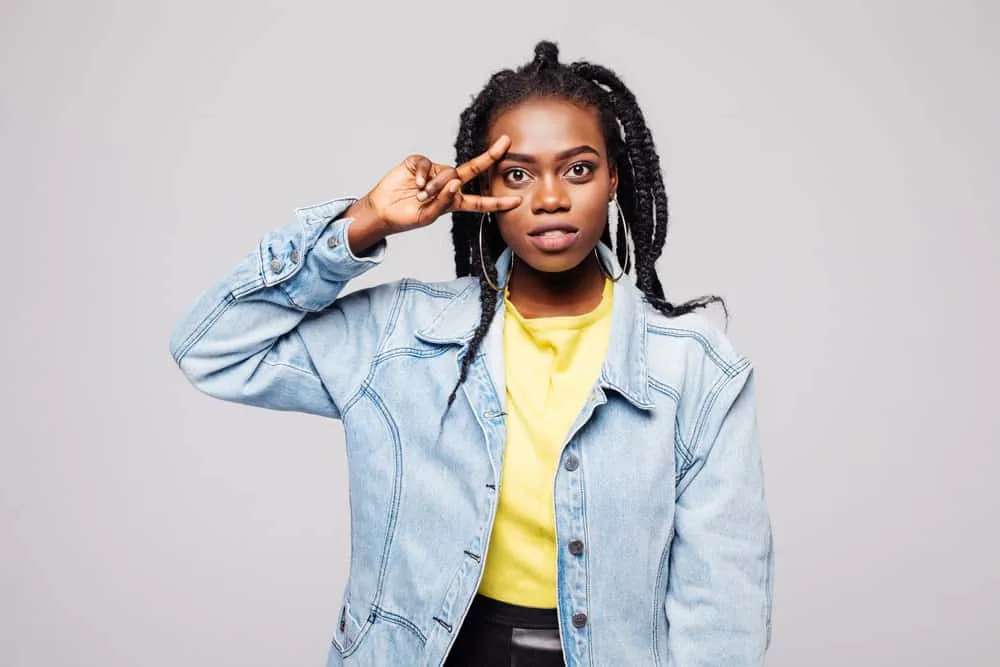
Mistakes People Make When Braiding Their Hair
You’ve now got some great braiding techniques in your proverbial back pocket. Still, problems could creep up out of nowhere when you’re learning to braid your hair.
We’ll help you avoid the most common hair disasters by sharing some of the top mistakes people make when braiding their hair.
- Braiding the hair too tight. There’s no reason to pull your hair at full force while you’re braiding. The amount of tension you use should be somewhere in the middle – not too loose and not too tight. So, if you feel any pain while braiding, chances are you’re braiding too tightly. Wearing tight braids is one of the main causes of hair loss among Black people. Avoid this issue by being mindful of how tightly you pull your hair. And if you ever go to have your braids done professionally, tell your braider if they’re pulling your hair too tightly. And if they don’t lighten up, feel free to get up from the chair.
- Not holding your fingers close enough to the braid. Unless you want your braid to be loose and irregular, hold your fingers close to the braid. If you’re having trouble gripping the hair, add a little pomade to your fingers to make them tacky. You shouldn’t have much of an issue after doing that.
- Putting too much product on the hair. It’s a good idea to moisturize your hair before braiding it. It can also be helpful to add some smoothing product down the length of your hair for neatness. But it’s important not to go overboard with hair products; doing so can make your hair slippery and hard to braid.
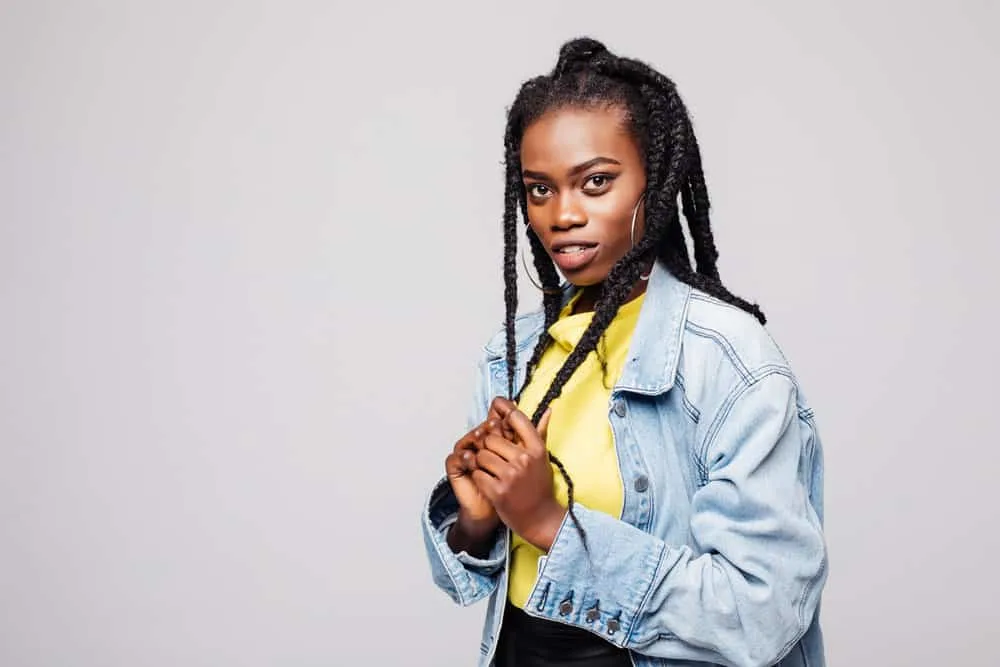
Can I Get Braids if My Hair is Short?
All the tutorials we’ve linked to in this article have featured mannequins with medium-length to long hair. But that doesn’t mean you can’t get braids if your hair is short. As long as your hair is long enough to grip, you can get your hair braided.
Most people can comfortably grip hair that’s at least 3 inches long. If your hair is shorter than that, you might have to pull it too tightly to braid it.
The key to braiding shorter hair is to position your hands as close to the scalp as possible as you braid. Only then will you be able to grip the hair and weave the braid.
But remember that gripping the hair too tightly will result in braids that do more harm than good, causing traction alopecia, headache, scalp irritation, and more.
Most braided styles require long hair to achieve. If your hair is short, you may opt for extension braids, where braiding hair is added to the braids to make them appear longer and thicker. That process is a little more complicated than braiding natural hair alone.
Braided Styles for Short Hair
Wondering which braided styles are best for people with short hair? If you’re looking for a style that doesn’t require extension hair, you should opt for a style where the braids lie flat to your scalp, like cornrows or Dutch braids. Hanging braids on short hair tends to look too scalpy, which many people will find unattractive.
How to Braid Hair for Men
Braiding men’s hair isn’t too different from braiding women’s hair. The braiding techniques are all the same. But you should consider the style you’re going for – man buns, straight backs, low cornrow ponytails, and other styles complement a masculine aesthetic more than a feminine one.
Another factor you should be sure to consider is your hairline.
If you plan on getting your hair cut by a barber, do so before braiding your hair. You don’t want to go through the entire styling process and then have a stylist accidentally nick your braid. So, ensure that you’re doing things in the right order.
Can Guys Wear Extension Braids?
Ultimately, you can wear your hair however you’d like – it is your hair. So, experiment and have fun – that’s a major reason people braid their hair in the first place.
Interestingly enough, an increasing number of guys are incorporating braiding hair into their braided styles. Sometimes it’s done to remedy thinning, but other times it’s done just for the hair to appear longer and thicker.
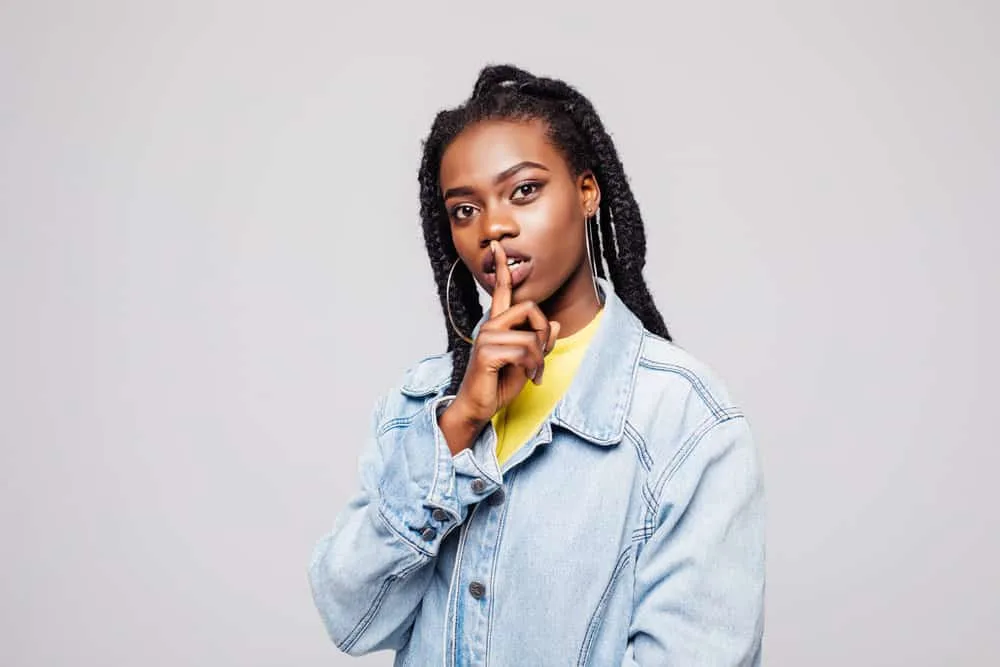
How to Care for Braids After Styling
After you’ve spent all that time and effort creating the perfect braids, it’s important to take care of them properly. That is if you want them to last as long as possible.
Here are some tips on how to care for your braids after styling:
- Keep them clean. Just because your hair is braided doesn’t mean it’s impervious to dirt and oil buildup. Whenever you realize that your braids are getting oily, taking on a grey sheen, or showing signs of buildup around your hairline, it’s time to wash them. But you don’t have to go the shampoo and water route every time- you can use a dry shampoo or spray-on braid wash to refresh your scalp and braids. But if your braids are super dirty, it’s best to give them a full wash with shampoo; many find that diluting their shampoo makes the washing process a little easier.
- Oil your scalp regularly. When your hair is braided up, your scalp is exposed to the elements, leading to dryness, flakiness, and irritation. So, do your scalp a favor and regularly apply some soothing, moisturizing oils. You may not have to oil your scalp often – only as needed.
- Cover your braids at night. Cover your braids with a satin scarf or bonnet before bed to ensure that your braids don’t get frizzy before their time. Doing so will also help to preserve moisture and prevent breakage.
- Try not to pull or manipulate your braids too much. Though playing around with your braids may be tempting, do all you can to fight hands-in-hair syndrome. The more you pull, rub, or otherwise mess with your braids, the quicker they’ll look unkempt.
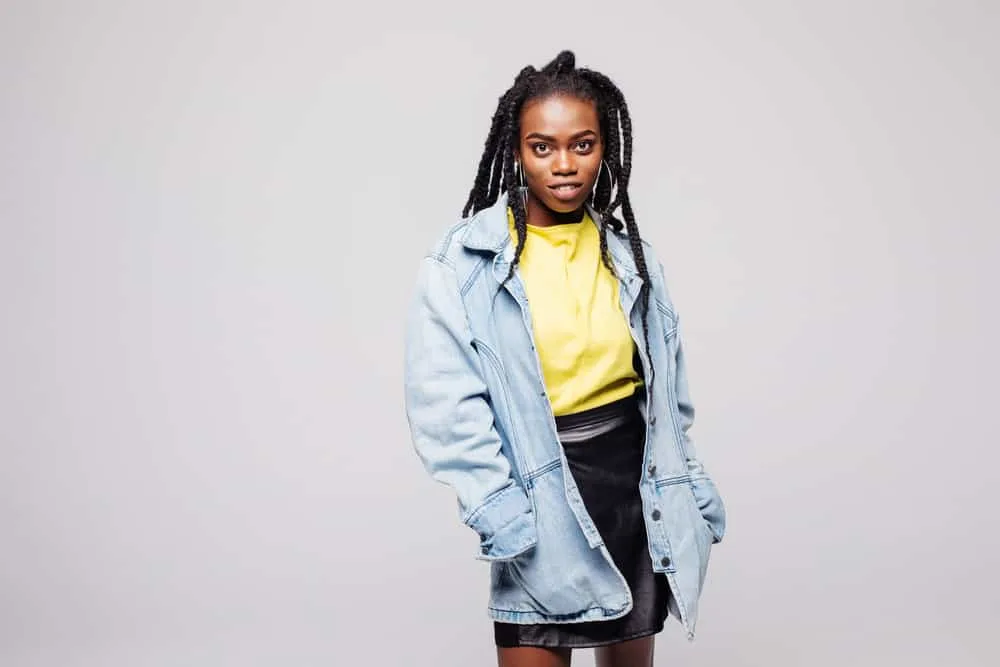
How Long to Keep Braids In
With all of that understood, you might be wondering how long to keep your braids in. The answer depends on the type of braids you’re wearing, whether you used smoothers, pomades, or braiding hair during the process, and what your nighttime hair routine looks like.
You can’t expect large braids to last longer than a week or so – the larger your braids are, the shorter their longevity. On the other hand, small braids tend to last longer than a week.
The braiding process has a lot to do with your braid’s longevity. If you used a pomade or smoothing product on your hair while braiding, your braids will likely last longer.
If you didn’t, they will start frizzing up within a day or so.
Braids done with extensions last for weeks or months on average. Whereas braids that are done with only natural hair rarely last longer than a week.
Lastly, nighttime protection increases your braids’ longevity. Though it’s hard to pinpoint how many more days you’ll get out of a braided style if you cover it up at night, it does make a big difference.
To sum things up, read the following list:
- Extension braids last for weeks or up to two months.
- Braids done without product last for days.
- Braids done with holding or smoothing products last for a week or more.
- Big braids age faster than small braids.
So, there you have it – everything you need to know about how to braid. We hope that you found all of the information you needed, and we wish you the best as you experiment with DIY braided styles!
